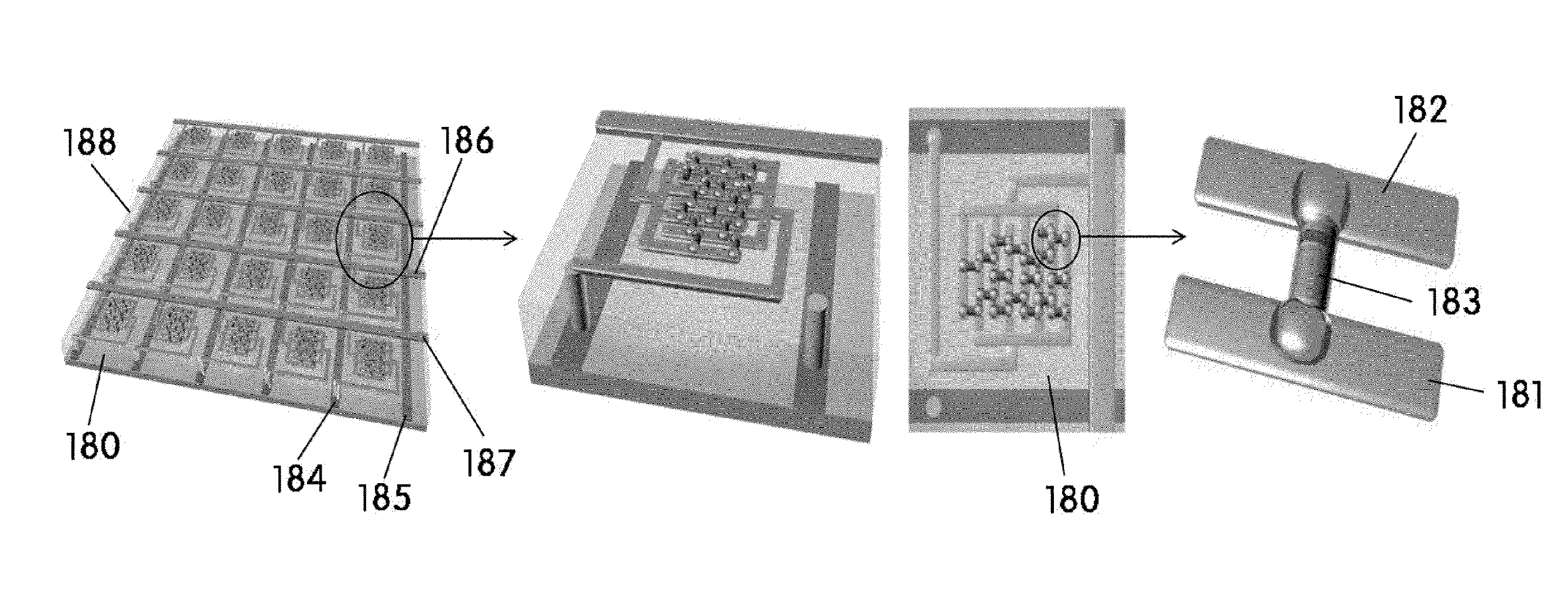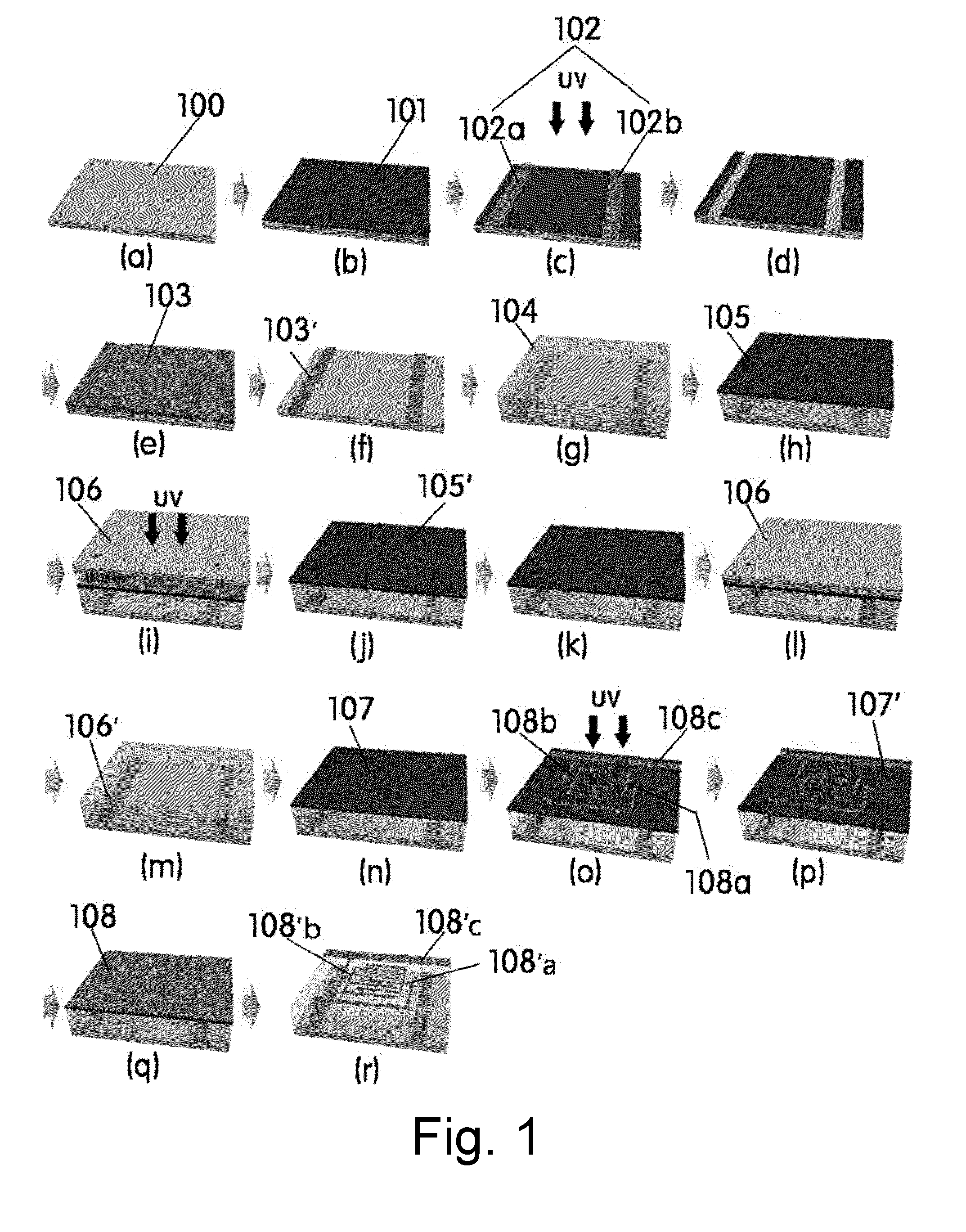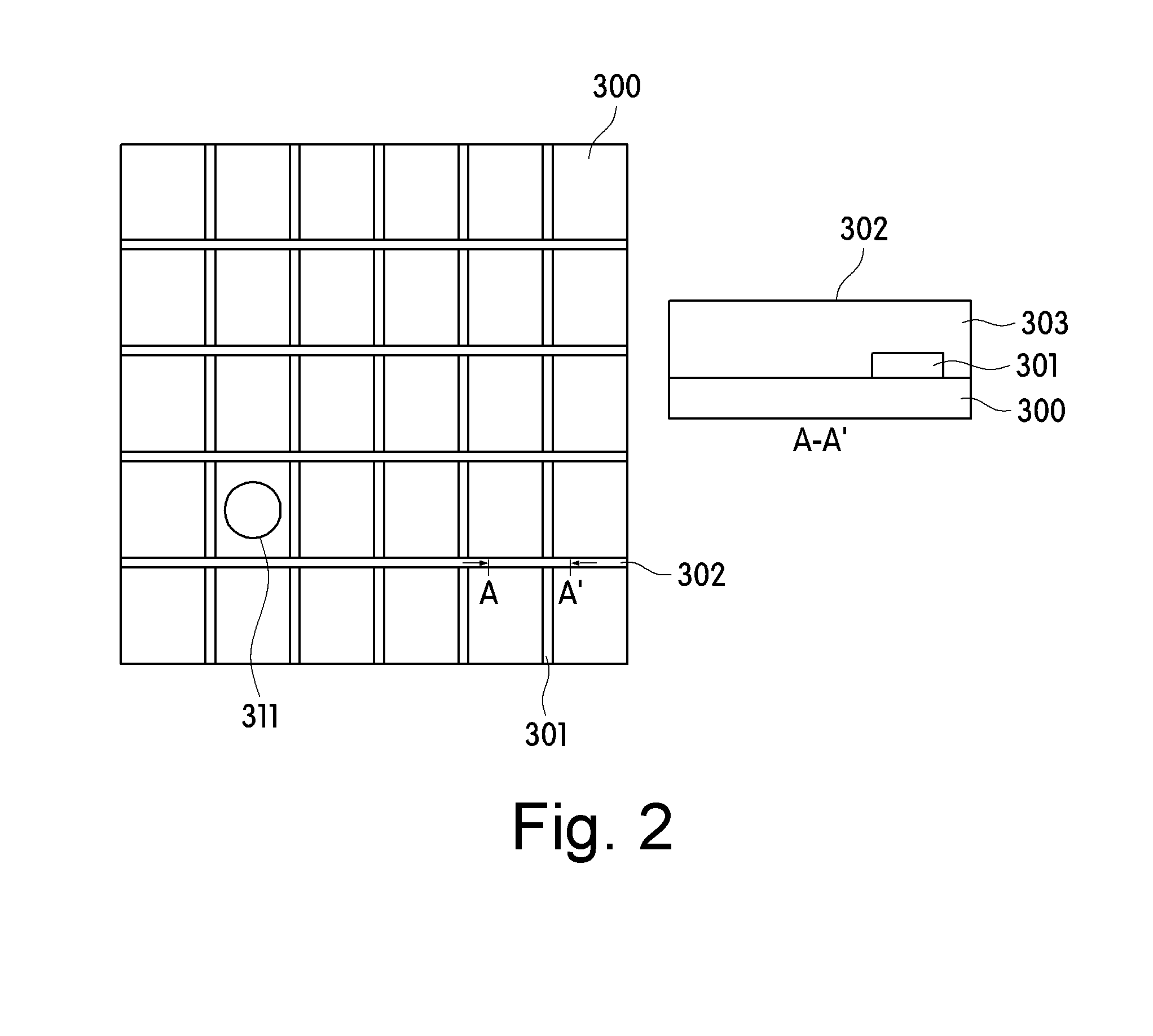Display comprising ultra-small leds and method for manufacturing same
- Summary
- Abstract
- Description
- Claims
- Application Information
AI Technical Summary
Benefits of technology
Problems solved by technology
Method used
Image
Examples
example 1
[0309]An electrode assembly as illustrated in FIG. 1 was manufactured on a substrate formed of quartz and having a thickness of about 800 μm. Here, in the electrode assembly, an electrode I has a width of about 3 μm, a first electrode has a width of about 3 μm, an electrode II has a width about 3 μm, a second electrode has a width about 3 μm, a distance between the first electrode and the second electrode is about 2 μm, and each of the electrodes has a thickness of about 2 μm. Also, each of the electrodes I and II and the first and second electrodes is formed of a titanium / gold material, an insulation layer formed on a substrate is formed of silicon dioxide in the electrode assembly, and the substrate has a thickness of about 0.5 μm. In the electrode assembly, a single sub pixel site on which a nano-scale LED device is mounted has an area of about 4.2×107 μm2. Thereafter, an insulation barrier as illustrated in FIG. 6 was formed on the base substrate. The insulation barrier was form...
example 2
[0312]Although the same process as Example 1 is performed, the insulation barrier is not formed, and nano-scale LED devices dropped onto a sub pixel site without the insulation barrier to manufacture a display including a nano-scale LED electrode.
example 3
[0313]Although the same process as Example 1 is performed, nano-scale LED devices were injected to sub pixel sites, instead that the solution containing the nano-scale LED devices drops into the sub pixel sites surrounded by the insulation barrier on the base substrate. Then, acetone was injected into the region in which the nano-scale LED devices are injected. Here, the injected acetone has about 10,000 weight part with respect to 100 weight part of the nano-scale LED devices. While the solvent is injected, AC power having a voltage of VAC=30 V and a frequency of about 950 kHz was applied to the electrode assembly for one minute to manufacture the nano-scale LED electrode assembly.
PUM
 Login to View More
Login to View More Abstract
Description
Claims
Application Information
 Login to View More
Login to View More - R&D
- Intellectual Property
- Life Sciences
- Materials
- Tech Scout
- Unparalleled Data Quality
- Higher Quality Content
- 60% Fewer Hallucinations
Browse by: Latest US Patents, China's latest patents, Technical Efficacy Thesaurus, Application Domain, Technology Topic, Popular Technical Reports.
© 2025 PatSnap. All rights reserved.Legal|Privacy policy|Modern Slavery Act Transparency Statement|Sitemap|About US| Contact US: help@patsnap.com



